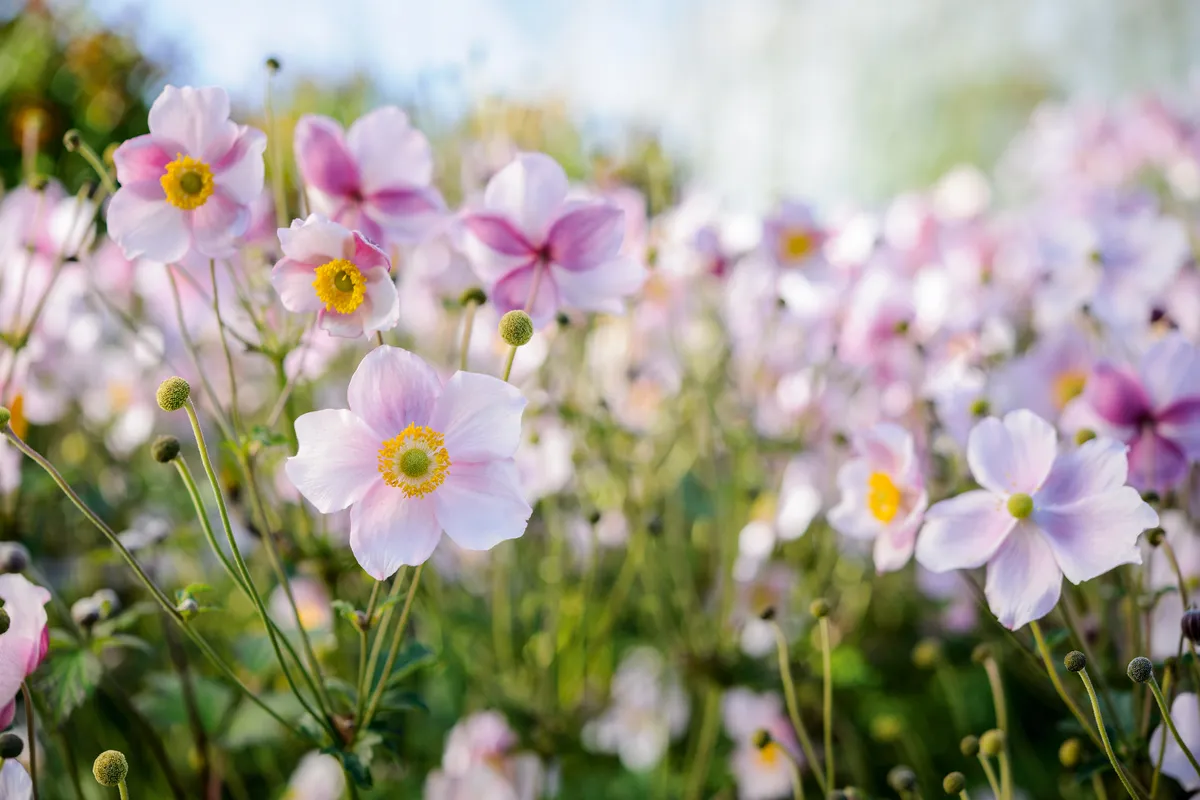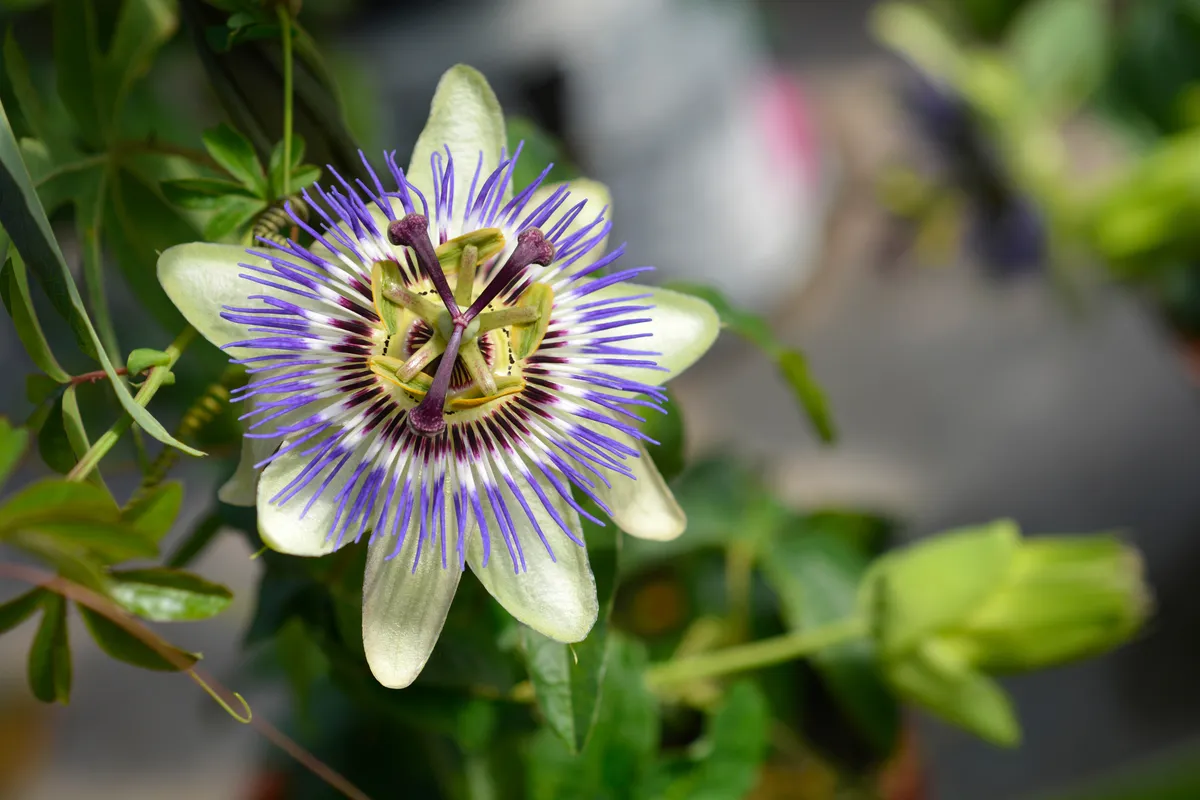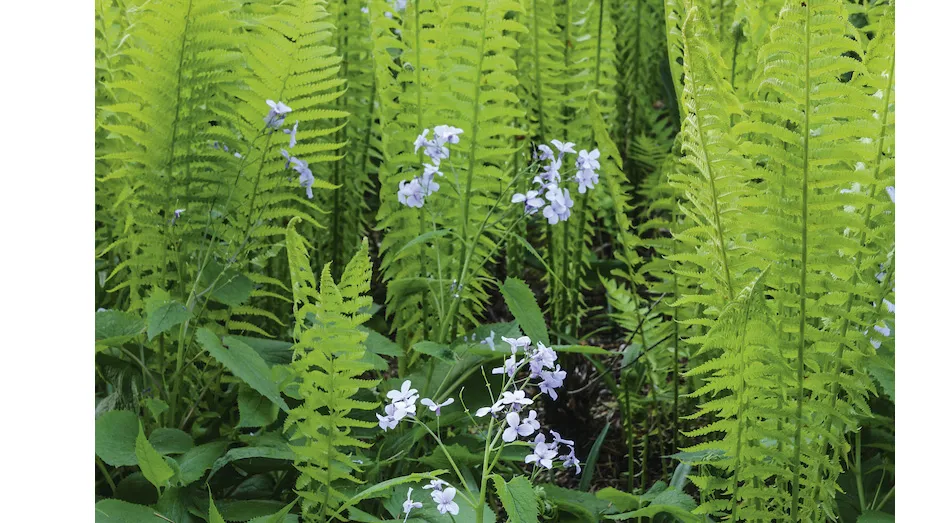Within the plant world, there are two meanings for the word 'invasive'. One refers to the invasive, non-native plants on Schedule 9 of the Wildlife and Countryside act 1981. There are stringent regulations in place around these plants, which, if they take root, can disrupt the delicate balance of our native ecosystems. We have covered some of the worst invasive plant offenders here.
Invasive (or, more accurately, "potentially invasive") is also a term that describes plants that aren't considered a threat to the wider environment, and are widely offered for sale at garden centres, but could take over your garden given half the chance. They can potentially become 'thugs', taking over your garden.
You may also like
- Invasive plants: Here's what not to plant and how to avoid a fine
- How our plant buying habits are threatening Britain's native flora
- Plants with bad reputations can be good for your garden
- What the gunnera ban means for gardeners
Plants can be thuggish because they are vigorous (robust, and grow very fast and large), spread via underground stems (rhizomes) or suckers (shoots that emerge from the root system) or by layering (sending out shoots which root where they touch the ground) or self seed prolifically. They can be well behaved in some gardens, but if given the conditions they happen to like, they can take over. Many invasive or thuggish plants are hard to eradicate thanks to a thick mesh of roots, deep roots that will regrow from a small fragment, and tiny bulbs that are difficult to dig up, or reaching an excessive size, making them hard to keep in check.
The list below are general plant thugs which you should be wary of adding to your garden.
Hyacinthoides hispanica (Spanish bluebell)

The Spanish bluebell is lighter in colour than our native Hyacinthoides non-scripta, with straighter stems and no fragrance. Introduced as a garden plat in the 17th century, it’s more vigorous than the British bluebell and competes and hybridises with our native flower, altering woodland ecosystems. Although it’s not an offence to plant or grow Spanish bluebells in the garden in England and Wales, the charity Plantlife recommend gardeners don’t grow them if they live near woodland or close to a known native patch of bluebells to help conservation efforts to protect our native species. In many gardens, Spanish bluebells rapidly spread and are hard to eradicate - even if you think you've dug up all the tiny bulbs, it's likely that some will remain.
Bamboo

In more recent years, concerns have been raised about running types of bamboo such as Sasa, Sasella, and Phyllostachys. In favourable conditions, running bamboos spread vigorously, sending out rhizomes (underground stems) which then grow into fast-growing plants in areas where they’re not wanted, often a neighbour’s garden. The rhizomes are strong and regenerate easily. The best way to control their spread is to grow them in a container or insert a physical barrier to prevent them from becoming invasive.
Lonicera japonica (Japanese honeysuckle)

A fast-growing evergreen climber with a sweet fragrance, Japanese honeysuckle is native to East Asia. It spreads rapidly, growing into dense mats which smother native plants and shrubs, out-competing them for sunlight, nutrients and space. It’s a tough plant that can thrive in a wide range of conditions and climates, which makes it difficult to control. If you’re considering growing a honeysuckle, choose the native species, Lonicera periclymenum instead.
Japanese anemones

While they have lovely blooms that flower between summer and autumn, some Japanese anemones can spread rapidly. Certain cultivars will be very difficult to take up and if you are removing the plant, take care to remove all trace of the roots, as any piece left can produce new plants. Although all anemones will slowly spread, some, such as Anemone hupehensis var. japonica ‘Pamina’ and the Swan Series are far less aggressive.
Greater periwinkle (Vinca major)

This evergreen sub-shrub is great for ground cover and easy to grow in full sun and shady areas, and seemingly flowers almost all year round. However it is best to keep an eye on this vigorous plant, as left unchecked it can take over. It sends out shoots which root where they touch the ground and can easily takeover plants in their way. It's best to cut back the plant regularly, and avoid putting periwinkle in the compost bin, as the roots can continue growing there.
Persicaria (Bistorta)

Late season flowers, spanning four months from July to October, combined with its general hardiness, versatility and attractiveness to pollinators make persicaria a popular choice in prairie and naturalistic plantings.
Although their roots do not spread, some are strong clump-formers in rich, moist soil, including Koenigia x fennica ‘Johanneswolke’ (formerly Persicaria x fennica ‘Johanneswolke’) and Bistorta amplexicaulis (previously Persicaria amplexicaulis) and can swamp adjacent plants.
Poor soil and drier conditions will restrict their vigour, as will splitting and re-planting their clumps in autumn. But the best approach is to let them jostle with other big beasts of prairies, meadows and flower borders, such as Eupatorium, Vernonia and larger ornamental grasses such as Miscanthus sinensis, Molinia caerulea subsp. arundinacea ‘Transparent’ and Panicum virgatum ‘Northwind’.
Flag iris (Iris pseudacorus)

This native aquatic iris is great for pollinators, but can quickly take over a pond. It's a marginal plant, usually found at the edge of ponds, and grows with rhizomes. It loves to grow in wet, deep, humus-rich soil, and although it looks lovely, if you have a small pond, it's worth avoiding. You can thin out pond weeds using a rake, and it's best to cut back and remove.
Houttuynia cordata (Chameleon plant)

Houttuynia cordata has attractive variegated foliage. In damp or fertile soils, it can quickly spread via underground rhizomes, forming dense colonies. You can restrict its growth by growing it in drier soils, or you could grow it in a pot. It can be hard to eradicate, regrowing from just a tiny piece of rhizome left in the soil.
Mint

Mint is a lovely useful herb that is easy to grow. There are many different types, from traditional peppermint and spearmint to Moroccan mint (perfect for mint tea) and even chocolate mint. However it is very vigorous and spreads via underground rhizomes. It is best to avoid planting it directly into the ground, restricting the roots by growing it in a large pot or trough.
Leyland cypress (× Cuprocyparis leylandii)

Leyland cypress is often chosen as a hedging plant as it is evergreen and grows very quickly - up to 90cm a year. However it can eventually reach over 30m, creating excessive shade in gardens and drying out the soil, making it difficult to grow plants close by. Find an alternative from our list of 30 of the best plants for a hedge.
Snowberry

As shrubs go, this is something of a 'car park' plant - tough and capable of growing anywhere, but not very attractive. The small pink flowers are followed by white fruits the size of marbles. It spreads by suckering roots, and can form a thicket so is best avoided in borders and is not recommended if you live near woodland, as it can outcompete native plants there.
Sumach (Rhus)

This large shrub is mostly grown for its attractive, pinnate leaves that turn fiery red and orange in autumn. However it produces suckers (shoots that emerge from the root system; if left they will become another plant). Tear (rather than prune) the suckers away from a point as close as possible to the root, so that they will not regrow.
Passionflower

The common passion flower has beautiful large, white-green flowers with intricate violet and white filaments. They are very popular with bees. It is a vigorous plant that will quickly cover a sunny wall, fence or pergola, but it can get out of hand, reaching 10m tall and wide and twining easily around anything in its path. To keep it in check, prune hard, back to 30-60cm, in spring.
Russian vine (Fallopia baldschuanica)

The Russian vine is also known as the 'mile-a-minute' vine thanks to its extraordinarily fast growth - it can put on up to 4m of growth per year and reaches a height and spread of 12m x 8m. Prune in summer after flowering to keep it in check.
Acanthus

Acanthus, with their tall flowering spikes and bold leaves, can add drama and height to a border and are easy to grow, thriving in most soils. They have a reputation for being thuggish, however, as they can form a very large clump, swamping smaller plants nearby. They have very deep roots, making it difficult to dig them up or move them. If any piece of root is left in the ground, it will regrow into a new plant.
Looking for information on invasive plants?
Smyrnium perfoliatum

Also known as alexanders, this pretty biennial was introduced by the Romans. It bears sprays of lime green flowers in spring, and its ribbed stems and leaves are edible. While an attractive and useful plant, it does have a tendency to self-seed prolifically and is listed on Schedule 9 of the UK Wildlife & Countryside Act as an invasive non-native species. Although not banned from sale, it is an offence to plant or cause these to grow in the wild in England and Wales. To avoid it seeding, cut down after flowering.
Amenanthele lessoniana (Pheasant's tail grass)

Formerly known as Stipa arundinacea, this clump forming ornamental grass has arching leaves that are tinged with red or orange later in the season. While it is an attractive and useful plant, it does have the potential to become a nuisance due to prolific self seeding in the conditions that it likes (sun or partial shade in well drained soil). Remove any unwanted seedlings as they appear to keep it under control.
Allium siculum (Sicilian honey garlic)

Also known as Nectaroscordum, this tall and beautiful allium is adored by bees, and looks great in a border in May - it is often a feature of Chelsea show gardens around that time. However it self seeds enthusiastically and can become mildly invasive, so pull up seedlings as you spot them if you don't want them to take over.
Matteuccia strathiopteris (Shuttlecock fern)

The shuttlecock fern is an attractive foliage plant for moist, dappled shade. While it looks good en masse, it does spread, via underground rhizomes. Did up and move (or dispose of) offsets in spring.





